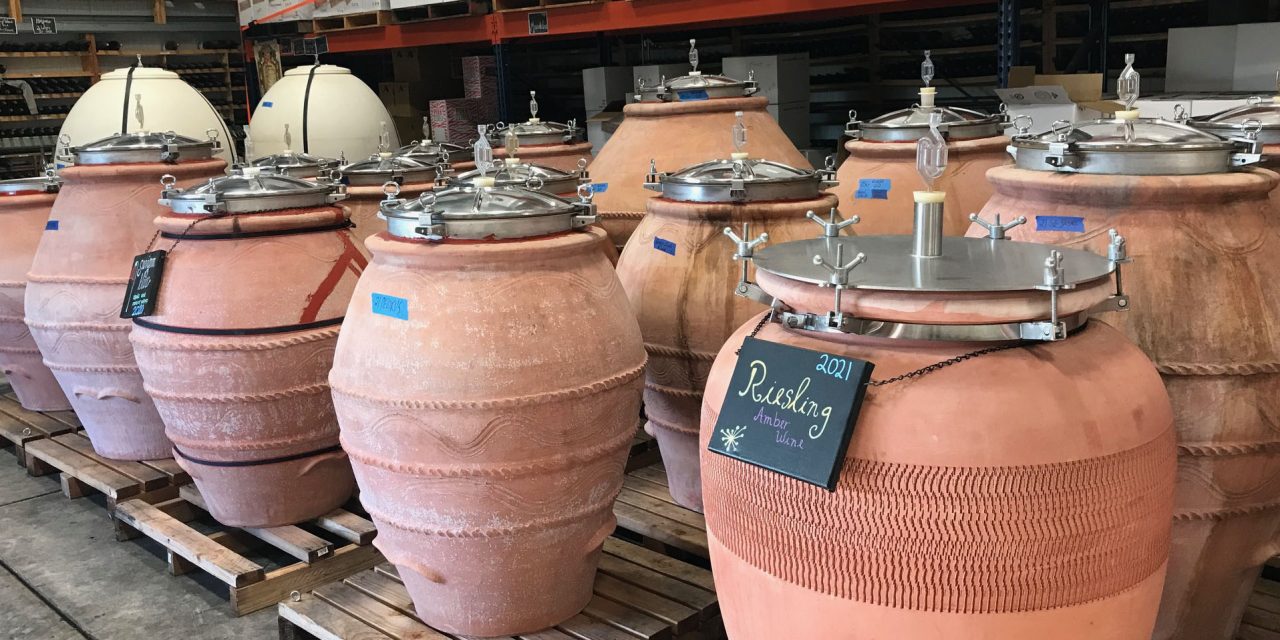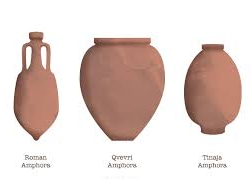Ancient Tradition Meets Modern Winemaking: The Art of Aging Wine in Clay Amphorae


As winemakers continuously seek ways to express the unique characteristics of their vineyards, an ancient technique has re-emerged as a modern favorite: aging wine in clay amphorae. Originating thousands of years ago in regions like Georgia, Italy, and Greece, clay amphorae offer a unique and distinctive aging environment that brings out new dimensions in wine. Let’s explore how this ancient vessel influences flavor, texture, and overall wine character in today’s winemaking world.
Unlike stainless steel tanks or oak barrels, clay amphorae provide a semi-porous environment that allows a gentle exchange of oxygen, enhancing the wine’s structure and softening tannins over time. However, unlike oak barrels, amphorae do not impart any additional flavors like vanilla or spice. Instead, they allow the wine’s natural characteristics to shine, showcasing pure fruit flavors and a sense of place that truly reflects the vineyard’s terroir. This minimalist approach appeals to many modern winemakers who seek to produce authentic and expressive wines.
Clay’s natural insulating properties also play a significant role in the aging process. Amphorae maintain a relatively stable temperature, which helps to preserve delicate aromas and flavors during fermentation and aging. In some cases, winemakers bury the amphorae underground, which can further stabilize temperature and humidity, echoing techniques used by ancient winemakers. The result is a wine with a distinct texture—often described as silky or round—that brings a different sensory experience compared to other aging methods.
Winemakers can choose from various types of clay, each imparting subtle differences to the wine. Terracotta, for example, is one of the most popular materials due to its durability and mild mineral influence. Some winemakers experiment with lining the interior of the amphorae with beeswax, which reduces the vessel’s porosity and adds a hint of honeyed complexity to the wine. Others may opt for raw, unlined clay to fully embrace the vessel’s rustic influence.
Amphora-aged wines have gained popularity for their distinctive character and the way they highlight traditional winemaking techniques. Red wines aged in amphorae often exhibit vibrant fruit flavors and well-integrated tannins, while white wines can develop a rich, almost creamy texture, with floral and mineral nuances. Orange wines, produced by fermenting white grapes with their skins, are particularly well-suited to amphorae, resulting in wines with an amber hue and a complex profile of dried fruit, herbs, and spice.
The resurgence of amphora aging reflects a growing appreciation for natural and sustainable winemaking practices. Clay is a renewable resource, and the minimal intervention approach aligns well with organic and biodynamic principles. Winemakers who embrace amphora aging often prioritize environmental stewardship, crafting wines that are both expressive and harmonious with nature.
Whether inspired by a reverence for tradition or a desire to innovate, winemakers across the globe are rediscovering the art of aging wine in clay amphorae. This method not only honors ancient winemaking traditions but also opens up new possibilities for flavor and expression. As you explore wines crafted in amphorae, take a moment to appreciate the rich history and artistry that have shaped these extraordinary bottles. Cheers to the timeless allure of clay and the unique wines it helps create!
Comments
Commenting has been turned off.You know you want to
Sign Up For Our Newsletter
Keep up to date on the latest wine releases, events and promotions.